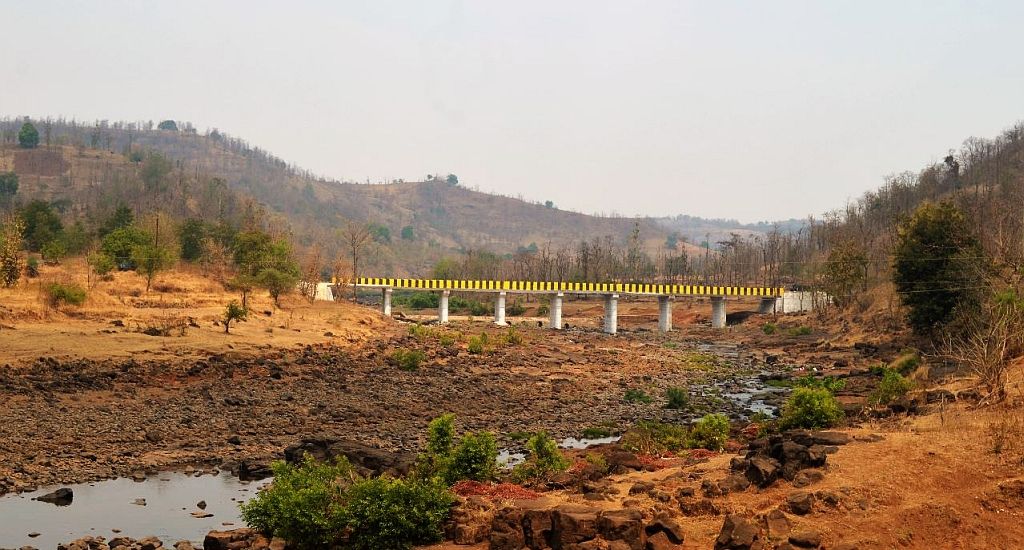Amidst the scenic embrace of the majestic Sahyadri hills, one of Maharashtra’s heritage-rich Palghar district’s hidden gems emerges – the quaint taluka of Mokhada. Here, amidst the lush landscape, a tale of transformation unfolds for the tribal villagers.
Mokhada, the second smallest taluka in Palghar, is home to 59 villages, where the heartbeat of life is the tribals belonging primarily to the Warli and Katkari tribes, constituting a staggering 92 per cent of the population.
Among these communities, the villagers of Botoshi and neighbouring hamlets once lived in perpetual fear of the rains that bestowed abundance on the land but brought isolation to the lives of the Mokhada tribal villagers. They dreaded the monsoon, year after year. Not for the fear of crop damage – after all, farming is their way of life – but for the anxiety of being marooned, cut off from the world.

During the wet season, the path connecting their settlements to the arterial road would vanish under the torrential deluge, halting all vehicular traffic and severing the lifeline between them and medical aid.
However, the residents welcomed the rains this year with newfound joy, breaking free from the fear that had plagued them for years. Thanks to a new road and bridge, connectivity remains intact even during the region’s heavy downpours, bringing relief and hope to the villages.
Tragic consequences
Deputy Sarpanch Tukaram Pawar of Botoshi gram panchayat recounts the heart-wrenching story of Markatwadi, a neighbouring pada, or hamlet, predominantly inhabited by the Warli tribe. In the torrential downpour of August last year, tragedy struck when a tribal woman named Vandana Budhar lost her newborn twins due to complications arising from pregnancy.
“My wife needed medical attention, but the ambulance couldn’t reach the village in the absence of a proper road. The mud track was submerged,” recalled Yashwant Budhar.
Also Read | Blending tribal people into India’s mainstream

The situation left the woman’s family with no option but to bear her on a makeshift palanquin, called doli, and traverse a treacherous rocky path to reach the main road, a formidable 3km away, to reach the nearest hospital. The memories of this heart-wrenching incident continued to haunt Budhar, a labourer striving to make ends meet, and his mother, Sula, who bore the indelible grief of losing her beloved grandchildren.
The tribes have harmoniously coexisted with nature for generations, relying on farming as their primary means of sustenance and drawing wisdom from the land’s timeless embrace. But their rain-induced predicament had remained unchanged, until recently.
In a cruel twist of irony, while the monsoons brought joy to tourists visiting the Sahyadri hills, the tribal dwellers grappled with existential crises, said deputy sarpanch Pawar.
Bridging the gap for Mokhada tribal villagers
The locals kept drawing attention to their situation, and their determination and the administration’s responsiveness finally bore fruit – construction of a concrete bridge and a tar road was initiated and now stands complete.

This year, residents of Botoshi and Markatwadi are at peace and, for the first time, have welcomed the rain with joy and celebration, just the way farmers everywhere do.
The river that once inundated the area, cutting off Botoshi during the rains, was tamed by the sturdy structure. Similarly, the tar road connecting Markatwadi to the main road brought a sigh of relief to its residents, enabling easy passage, rain or shine, said Tukaram.
Also Read | Tribal woman ushers in organic farming in India’s last village
Anjana Navale’s family was among the first to experience the transformative power of the bridge. When the 25-year-old gave birth to her baby girl, Priya, in January, she was able to reach the healthcare centre without any hindrance, ensuring a healthy start for her daughter’s life.
Priya happily swings in a cloth sling her mother made using an old bedsheet inside their modest home. Anjana’s mother-in-law Sita checks the knots of the sling frequently and gives it a gentle push before her sleepy granddaughter wakes up.

Anjana’s husband Pradip, a farmer, said: “All these years, we faced a lot of difficulties in the rains for basic necessities and medical attention. With the new bridge, now our lives are much better.”
In Markatwadi, the refurbished road was completed recently, putting an end to the villagers’ woes.
“The tar road that goes all the way up about 3km inside was also completed. It’s a big relief to the dwellers as they can now take their vehicles inside even during the rains,” said Yashwant Budhar.
The fears of being isolated were replaced by a newfound sense of connectedness. The villagers rejoiced, cherishing the blessings of the rains they once feared. Budhar, now filled with hope, believes that the pains his family endured will not befall others.
Also Read | Live like a tribal at these Bastar homestays
The lead image shows the new concrete bridge which has brought relief to residents of Botoshi village (Photo by Manu Shrivastava)
Manu Shrivastava, lawyer and journalist based in Mumbai. She is also the co-convenor of ‘The Woman Survivor’ initiative.








